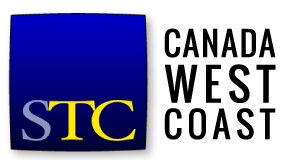On September 20, 2018 Nenad Furtula presented an overview of the principles and value of structured content. Nenad, a partner and VP Sales and Marketing at Bluestream Database Software, has been working with Extensible Markup Language (XML) for over 15 years.
Structured vs. unstructured content
Unstructured content is written as a single, complete unit (for example, a Word document). This is how content has been traditionally produced, but has some issues:
- Content is difficult to reuse.
- Collaboration is challenging.
- Review and translation require completion of the entire document.
- Style and content are not separated.
- Search is difficult and often inaccurate.
Structured content is written in small units that are assembled together later and can easily be rearranged and repurposed. This solves many of the issues associated with unstructured content.
XML
XML, a markup language similar to HTML, is a good tool for creating structured content because it provides a standardized format for identifying the structure of documents, readable by both humans and machines.
In XML, structural elements (such as paragraphs) are separated from stylistic elements (such as fonts). This gives users much more control over content development, allowing them to focus on writing rather than formatting:
- Content is written and stored in modular chunks which can be easily reused and moved around.
- Metadata can be applied separately to each chunk to improve search functionality.
- Styles are stored in a single location and not applied to the structure until publication, so they are easily applied and changed.
- Users can publish to multiple platforms with a single click, with different formatting for each platform.
DITA
Darwin Information Typing Architecture (DITA) is an XML-based content model. Users create topics, then assemble them using maps to create publications. Each topic is written once, using structural elements independent of style, and then reused as necessary.
Each DITA topic is a short, self-contained unit that answers a single question. Although there are many specialized topic types, there are three main types:
- Concept (explanatory – what is it?)
- Task (procedural – how do I do it?)
- Reference (facts without explanation)
A DITA map is an XML file containing links to topics. A publication can be a DITA map or a set of DITA maps. Topics can be reused through hundreds of publications, and any change made to the topic will propagate through all of them.
Getting started with structured content
If you want to move towards using structured content in your organization, you’ll need to start with developing a solid business case.
Next, review your content development lifecycle and information architecture. How will your process change? Is it appropriate to map your content to a DITA model? The case is not as strong for one-off articles as it is for complex documentation; although, adding structure will improve search functionality in any type of content.
Deciding on tools should be the final step. They are a long-term investment with a relatively steep learning curve, and the right tool will depend on the process you choose.
Developing a business case
How do you sell the idea of structured content to the rest of your company? There are three major benefits to business:
- Saving time and money during the content development cycle. With structured content you can easily re-use and repurpose content, reduce translation time and costs, and publish to multiple platforms with one click.
- Leveraging value from your content. Structured content makes it easy to provide extra value to customers. People like to be able to consume content on mobile devices and to start reading something on one platform and continue reading it on another. Because they don’t want to read manuals or call customer support they need functional context-sensitive help.
- Improving search functionality, which reduces support costs. The ability to tag each topic with individual metadata makes searching much more accurate, and chunked content means a search will return only the relevant chunk, rather than a huge document with the answer somewhere inside.
Process
Moving to structured content is a paradigm shift. You’ll need to change the way you think about content, create content, and assemble content, but in the end it will be faster, more cost-effective, and give the end-user a much better experience.
Tools
You’ll need three main tools to work with structured content:
- An XML editor
- A Component Content Management System (CCMS), which manages your topics and the relationships between them
- A publishing engine, which creates your final outputs in various formats
A CCMS will sometimes also include an XML editor and a publishing engine.
References and Resources
To learn more, Nenad recommends visiting LearningDITA, which provides free DITA courses sponsored by a group of companies that work with structured content. For further information about DITA, you can also visit the homepage of the OASIS DITA Standard.
Nenad is also planning to form a local community of interest related to structured content. If you’re interested, you can contact him through LinkedIn or at nenadf@bluestream.com.
